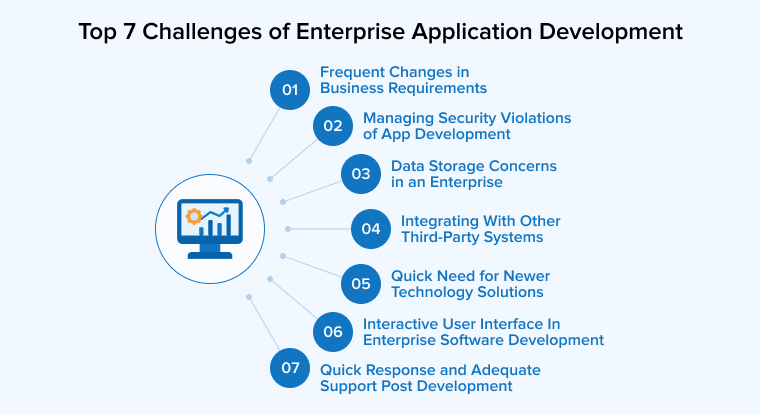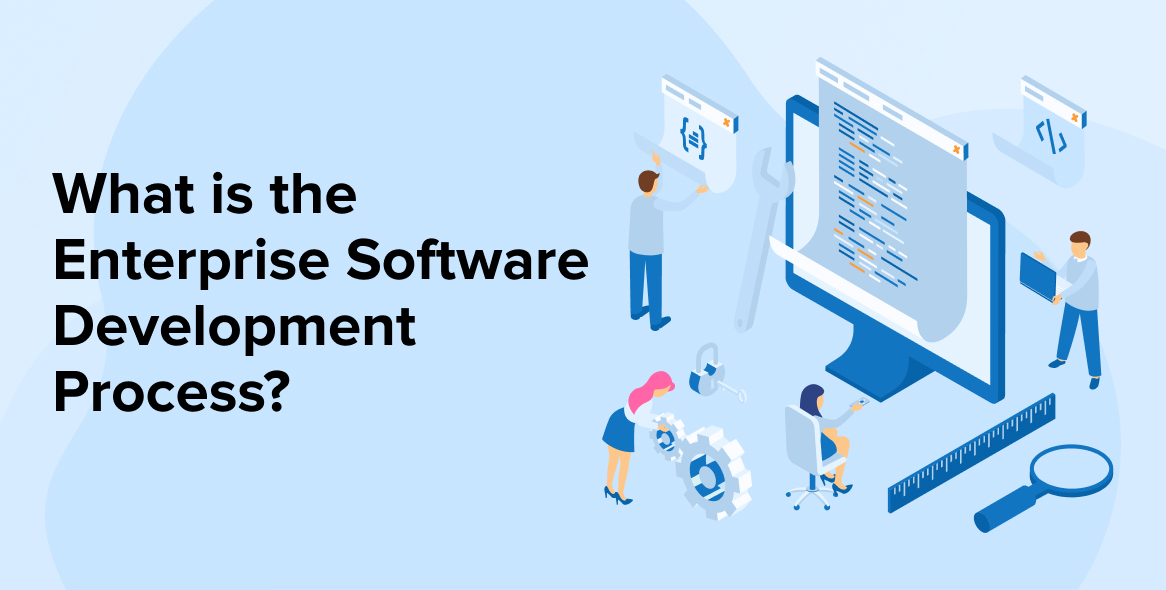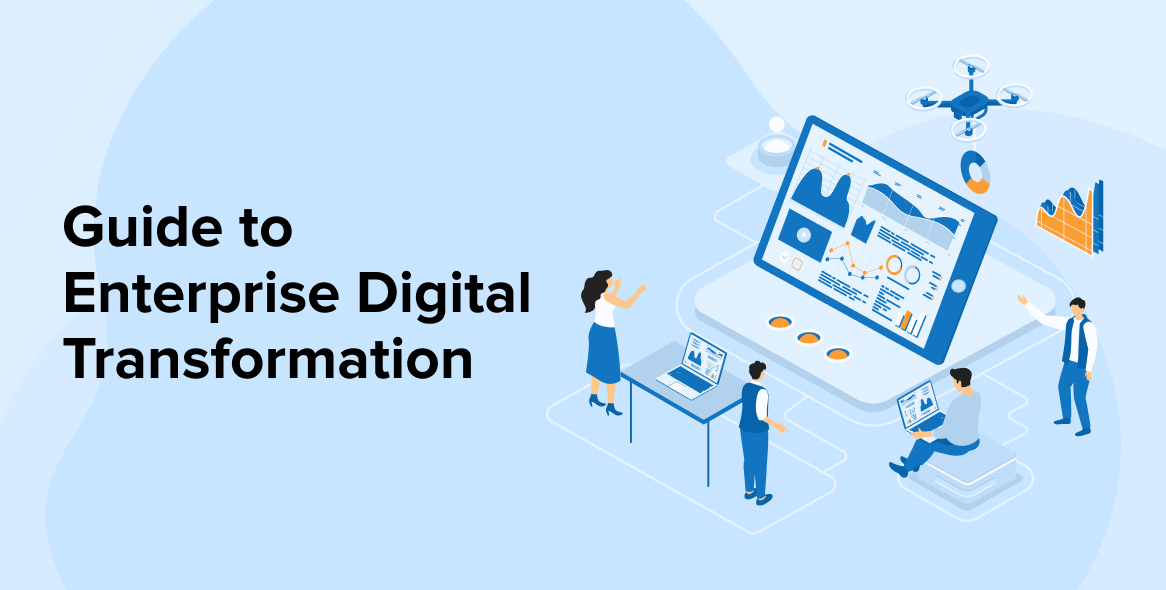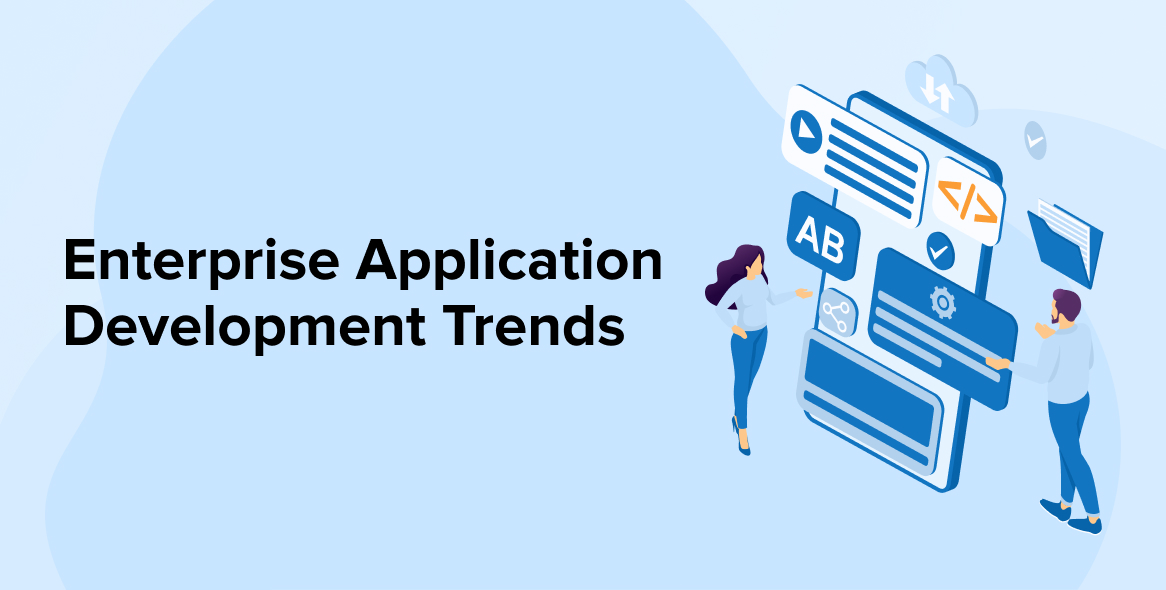
The business landscape is brimming with new technologies forcing businesses to incorporate them within their enterprise. The rise of technology is to comfort customers and make their processes hassle-free. Enterprises are driving to build a custom-centric ecosystem. Enterprise Applications are playing a major role in this process of development.
Enterprise applications are the lifeblood of every business. These are very complex and difficult to create. This is because every company has a number of custom apps tailored to their individual needs, and all of these applications must communicate with one another and seamlessly share data in order for the business to run properly.
Developing an enterprise application is not child’s play. As a business, there are multiple challenges that you face, and as an enterprise, it is vital to take care of all anomalies. So, in this blog, we decided to bring together all the challenges carefully observed and selected the aspects that are impacting businesses.
Let us get started with the common challenges that businesses face.

1. Frequent Changes in Business Requirements
If market expectations change on a daily basis to accommodate everyone’s dreams and visions, application development suffers in terms of both time and costs. When it comes to enterprise applications, this becomes even more of a problem because the market analyst must consider the desires and constraints of different stakeholders from various departments.
The moment there is a new update, there will be a change in business requirements. every developer is used to facing this challenge. one morning they get back to work- there are new requirements in hand. The amount of time invested in coding, developing, and testing get in vain since now there are new requirements. From that very moment, the task of redevelopment is initiated then. It is a mammoth task for businesses but they have no other option but to take up and complete it.
Varying business needs keep business stakeholders on their toes and they want to create apps that work under changing requirements. To accommodate changes, it is essential for businesses to have experience and a specialized team of resources. if not in-house then hire a team of professionals who are proficient and adept with changing requirements and know how to address them appropriately.
If you outsource your needs, then they are used to changing needs and they have a specific team assigned for each technology. Suppose your business is changing from Java technology to Python there are two different teams of experts working on it. The project will be internally transferred but in other cases, the expense of hiring, training, and paying will exceed the budget and expected timeline.
2. Managing Security Violations of App Development
Data is at the heart of enterprise software. The company is compromised if data is compromised. Data was formerly maintained on physical computers, accessible by simple internal networks, and secured by the perimeter of firewalls. Security of data or enterprise application is one of the challenging tasks that businesses are unable to overcome. So, getting strong security standards is more critical than ever in the era of cloud computing.
There is no question about what are the security concerns, the list of security complexities is endless and we are just listed some of the major ones.
- Security of data
- Source code security concerns
- Privacy of data used while development
- Cookies storing data
- Enterprise application
- Post-development confidentiality issues
- Third-party apps integration and accessing
- Financial data involved
These are a handful of concerns but have a major impact on businesses when the data is breached. Developers who are involved in application development must ensure that all the data and rights are protected. The development process should be wisely considered and all the security needs of the organization should be addressed meticulously. As an enterprise, your business should take all the preventive measure that safeguards your organization from any enterprise application development concerns. These are some methods we think you should use during the development phase to help your business from any hacks or data leakage.
To minimize security threats, you can use application security testing. It eliminates errors and aids in the real-time detection of code bugs and coverage. It also provides immediate input to developers within seconds of coding and checking new code.
3. Data Storage Concerns in an Enterprise
For any enterprise, data storage is the biggest concern. As the business grows, data will also grow definitely at an unprecedented rate. Businesses go from terabytes to petabytes within a day. The comprehensive challenge of business is how to manage and optimize data on a regular basis so as to receive fruitful benefits. Much of that data is in unstructured formats like documents, photos, audio other files. Unstructured data can be difficult to search and analyze. It has a challenge for all sizes of organizations-small, medium, or large.
Large-scale data requires elaborate infrastructure to store it, which often means investing in high-tech servers that should be flexible to cater to the needs of the enterprise. The application development also demands good space for high functioning and performance. Considering the app development in mind, Cloud solutions are best-suited for business. There are other options as well. Depending on your company’s needs, you should choose between a data area network (SAN), network-attached storage (NAS), or direct-attached storage (DAS).
Not all businesses are well-versed with how this storage works and hence the best option here is to use AWS, where you can pay as you use. Your business won’t have to pay extra on storage, they can pay for what they have used because it is scalable. It also helps enterprises to flexibly use it through the web, mobile, and all other compatible applications.
4. Integrating With Other Third-Party Systems
Software development companies face the difficulty of integrating various IT programs through various branches, teams, and stages of design and development. Through this, they want to streamline business processes. In addition, system automation ensures that critical data can be interpreted and modified in real-time. To cater to different businesses and customers, enterprises need to offer different development services and thus integration of third-party applications is inevitable.
It becomes challenging for an enterprise to offer multiple services if they are monolithic. With such architecture, enterprises will not be able to offer a variety of functions to customers such as data processing, error and issue management, data input or outcome generation, and several other interlinked functions.
One pro-tip here collaborates with an outsourcing partner, they understand customer business needs and will cater accordingly. The scale and scope of the product are decided when before the initialization of development. If the company relies heavily on various technologies, then integration can become a problem. Any time any updates are made, testing and coding must cover both app development and a comprehensive development test plan.
5. Quick Need for Newer Technology Solutions
Technology is advancing every single day and your business needs to match up with the pace. In matching up the speed, you need to develop a product that adheres to changing market needs. Companies must go digital to meet their customer-centric needs. Innovation, cost-effectiveness, and a strategic edge are driving businesses to adopt these technologies. There is so much on the list that it is always challenging for the company to match the speed of changes. Don’t be shocked if you’ve just finished developing an Enterprise mobile app development and are being asked to make updates so as to amplify results and improve the company’s product from both aspects-front-end and back end.
For your enterprise development of the product, it should meet the switching speed of technology changes and concurrently maintain sales and ROI. How can a business perform both and a developer create an app like this is the question? There are many products in the market for diverse business systems, how to make your product unique should be your aim. One tip here is your team should be efficiently developing custom applications with the latest technology trends integrated into the systems which are high-performing and sustainable.
6. Interactive User Interface In Enterprise Software Development
Most enterprises face the challenge that the App and its user interface are cluttered with features that aren’t easy to identify or use. The Enterprise App can never be used casually by an employee. He must still have a lot of work to do, which is why the user interfaces find the ability and flow so important. It comes back to you if users do not find the GUI to be helpful. The product you develop for the enterprise must be intuitive and custom-made specifically for your business functions.
The user interface defines how the user will feel and experience when they use the application. A leading enterprise development company should focus on the attractive user first with their user interface and then other functional features to attract more customers.AN improvement in this strategy will bring more customers, boost sales, and finally higher sales to the business. But due to a lack of technology expertise, not all businesses are able to develop user-interactive applications. The development should also consider different standard sizes and proportions for each type of enterprise software application like Tablet, desktop, and mobile.
7. Quick Response and Adequate Support Post Development
Whenever your developer develops an enterprise application, it should have three major qualities- the latest technologies, simplified usage, and maintainability. When your enterprise performs application development, it is necessary to make sure that the apps are fast, efficient, and reliable. Also, once you develop the enterprise application, the post-development service should also be responsive. Most businesses face the challenge that they don’t get a responsive software development company and so they don’t outsource. Your company should always be responsive and customer-centric.
Maintainability is another of any kind of App is important and if we talk about Enterprise Applications, it becomes all the more vital. when businesses try to upkeep their features by fixing bugs and running securing patches. You should support the enterprise after the App has been deployed. The tip here is that non-maintainability is a grave cause of confusion between the developer and the enterprise.
8. How to Fix Enterprise Application Development Challenges?
In the end, the answer to your question is very common yet differentiating. You should choose one of the best tech providers that suit your enterprise and its custom business needs. It is difficult and time-consuming. Thousands of tech firms can be found all over the world. Your business should look for services and solutions that fit exactly the need and eliminates your development challenges. Isn’t this, what we aim for? A smooth business process and a developing enterprise application that is compatible across all types of devices (desktop, tablet, and mobile app) and across all operating systems. Look no further and partner with a technology firm as soon as you need.






Comments
Leave a message...